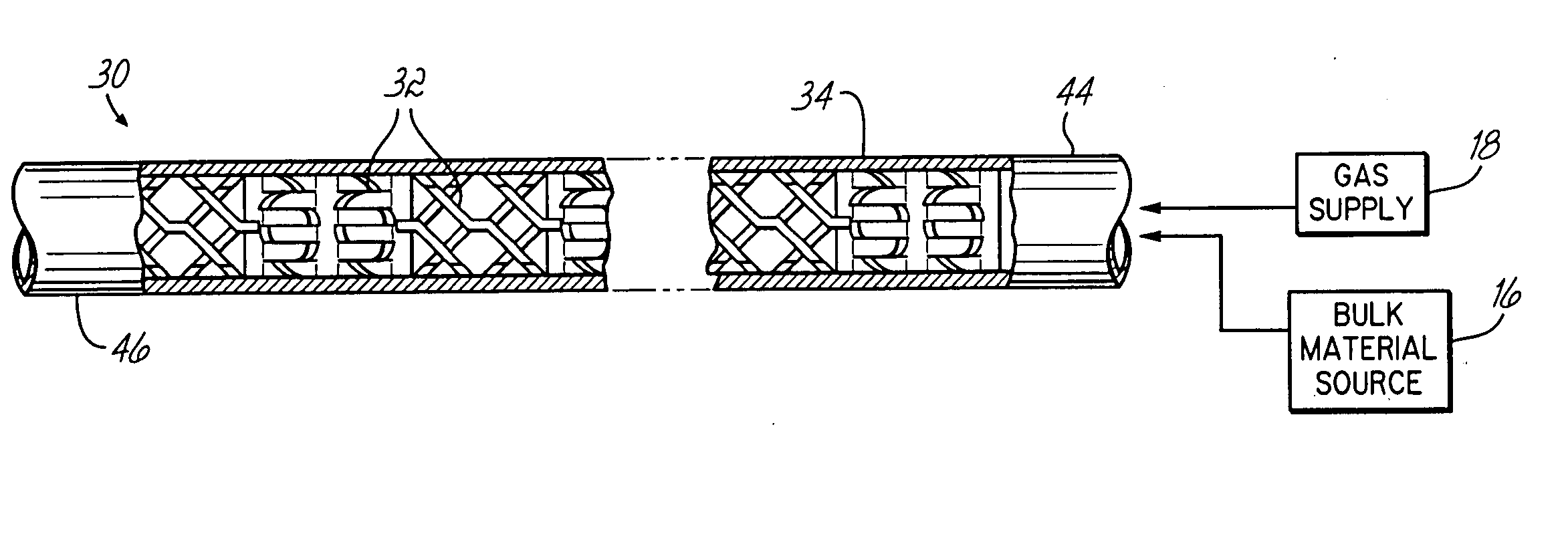Method and apparatus for producing closed cell foam
a closed cell foam and foam technology, applied in the direction of flow mixers, mixing methods, mixers, etc., can solve the problems of significant drawbacks relating to cost effectiveness and practicality in certain applications, relatively difficult to set up, and large volume of mixers, so as to avoid the relatively high cost, improve the effect of homogeneity, and simplify the design and operation
- Summary
- Abstract
- Description
- Claims
- Application Information
AI Technical Summary
Benefits of technology
Problems solved by technology
Method used
Image
Examples
Embodiment Construction
[0027] Referring to FIG. 1 a foam dispensing system 10 is illustrated and comprises a suitable system in which the mixing unit of the present invention may be incorporated. Except for mixing unit 12, the general configuration of the system 10 is shown and described in more detail in U.S. Pat. No. 5,056,034 issued to Rucki et al. and which is assigned to the assignee of the present invention and hereby incorporated by reference herein in its entirety. The system 10 controls gas and polymer flow to a mixing unit 12 constructed according to the present invention, as further explained below. The mixing unit 12 delivers a solution of the polymer and gas to a dispensing gun 14 after receiving and mixing liquid polymeric material and gas, respectively, from a bulk material source 16 and gas supply 18. The system 10 further includes a digital flow meter 20, a controller 22 as well as a pressure regulator 24 and a mass flow meter and valve 26. The digital flow meter 20 produces output pulses...
PUM
| Property | Measurement | Unit |
|---|---|---|
| pressure | aaaaa | aaaaa |
| viscosities | aaaaa | aaaaa |
| temperatures | aaaaa | aaaaa |
Abstract
Description
Claims
Application Information
 Login to View More
Login to View More - R&D
- Intellectual Property
- Life Sciences
- Materials
- Tech Scout
- Unparalleled Data Quality
- Higher Quality Content
- 60% Fewer Hallucinations
Browse by: Latest US Patents, China's latest patents, Technical Efficacy Thesaurus, Application Domain, Technology Topic, Popular Technical Reports.
© 2025 PatSnap. All rights reserved.Legal|Privacy policy|Modern Slavery Act Transparency Statement|Sitemap|About US| Contact US: help@patsnap.com



